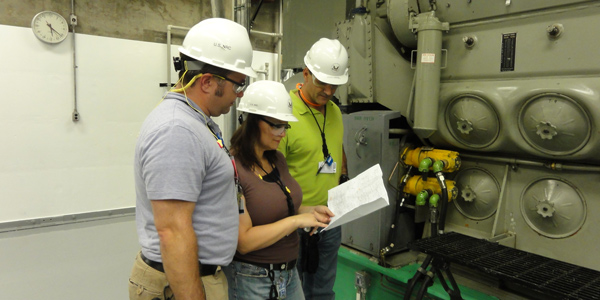By Michael Kuser
A Nuclear Regulatory Commission official said Tuesday that a team of the federal agency’s reactor safety engineers would likely recommend that the commission continue working on replacing a portion of its inspections with a self-assessment regime for operators of commercial nuclear power plants.
Tony Gody, NRC director of reactor safety in Region II (Southeast), said Dec. 12 that “the working group agrees that self-assessment, if implemented properly, can be very effective in finding latent conditions” and probably will be recommending further exploration of how to get there via a pilot program.
Gody made his remarks at the end of the agency’s second public hearing in two months on the use of licensee self-assessments in the NRC engineering inspection program and other changes in the reactor oversight process.
The Director of the Office of Nuclear Reactor Regulation formed the working group in February 2017 to review the commission’s engineering inspections that verify the adequacy of facility design, operations and testing, and make recommendations on improving both their effectiveness and efficiency. The commission has a webpage with related documents, including public comment.
The Good and the Bad
“We need to collectively as an industry own our own licensing design basis and regulatory performance,” said Greg Halnon, vice president for regulatory affairs at FirstEnergy, which owns two nuclear power plants in Ohio and one in Pennsylvania. The plants are the Davis-Besse plant in Oak Harbor, Ohio, the Perry plant in Perry, Ohio, and the two-unit Beaver Valley plant in Shippingport, Pa., which collectively generate 4,000 MW.
“We’re not abdicating our responsibility; we’re maintaining and owning that licensing basis,” Halnon said.
Dave Lochbaum, director of the Nuclear Safety Project for the Union of Concerned Scientists, said the 17 years of the reactor oversight process “have resulted in safety improvements, there’s no doubt about that, but achieving success loses value if backsliding occurs. … Our concern is, some of the measures being contemplated are banking on that success at risk of undermining it.”
Gody said that if whoever is doing an inspection or a self-assessment applies scientific principles, “it’s going to be a good inspection or self-assessment. And the fact that your own folks are already so familiar with your procedures, and the fact that your own folks already have computer accounts, already know the processes at the facility, already know the licensing basis, is a good thing and a bad thing.”
The good thing is they’ll be more efficient, he said.
“The bad thing is they may have preconceived conclusions,” Gody said. “It’s critical that when that checklist is developed that critical thinking is considered. If you accomplish that one thing, you potentially eliminate the human factor disposition to not challenge your own conclusions.”
Lochbaum said he wanted to push back on the “fanciful notion that there aren’t any more legacy, latent issues out there. There seem to be plenty of latent issues from long ago that we still haven’t found. Fort Calhoun [in Nebraska] is a perfect example, which shut down in 2011 and didn’t restart for 30 months. During that time, they submitted something like 18 LERs [licensee event reports], with the youngest of those being 15 years earlier, so they were at least 15 years old. Several of those involved engineering issues.”
Getting to the point of metrics, Lochbaum said “we recommended before and recommend again that the NRC should have looked at those LERs to see if the expectations were that the engineering inspections should have or may have identified those before they were found during an extended plant shutdown.”
NEI Supports
The Nuclear Energy Institute supports self-assessments, saying plant operators already do their own inspections in advance of NRC visits. “We believe that licensee self-assessments could be an important part of a modernized approach to engineering inspections. Such a solution would be rooted in our cultural value of self-identifying issues,” Greg Cameron, NEI’s senior project manager for regulatory affairs, wrote the commission in July. “We hold ourselves accountable to identify conditions at our stations early and to resolve them in a timely fashion commensurate with their safety significance; the NRC verifies that accountability through regular resident inspector interactions and the biennial Problem Identification and Resolution inspection. Transitioning from direct inspection to oversight of self-assessment activities, where appropriate, strengthens this accountability.”
Concerns in Mass.
But the self-assessment concept is unpopular with some neighbors of Entergy’s Pilgrim nuclear plant in Massachusetts, one of three plants in the country classified in Column 4 — the worst performers in NRC’s grading system.
A citizens group, Pilgrim Watch, cited an email written by the leader of a federal inspection team, who wrote that “the plant seems overwhelmed just trying to run the station.” The internal email became public mistakenly.
“Pilgrim provides the perfect example why NRC nuclear safety inspections are necessary and why industry self-assessments would be dangerous,” the group wrote NRC. “Pilgrim cannot be counted on to conduct any complete or accurate self-assessment. The NRC’s own records prove that Pilgrim has regularly and consistently failed to follow established procedures, to report problems, or to take corrective actions even when the NRC tells it to do so.”




